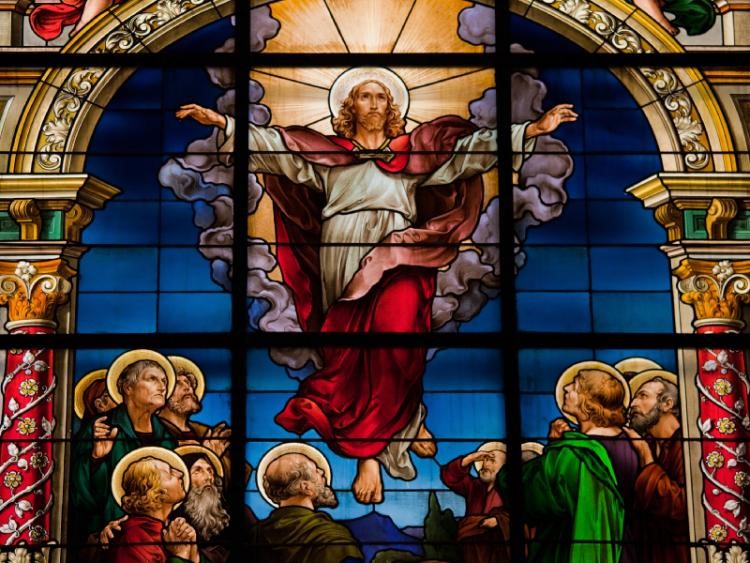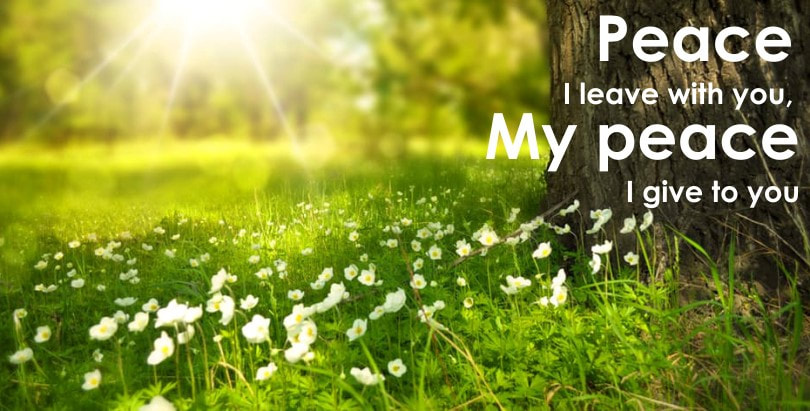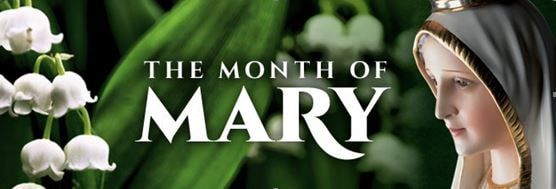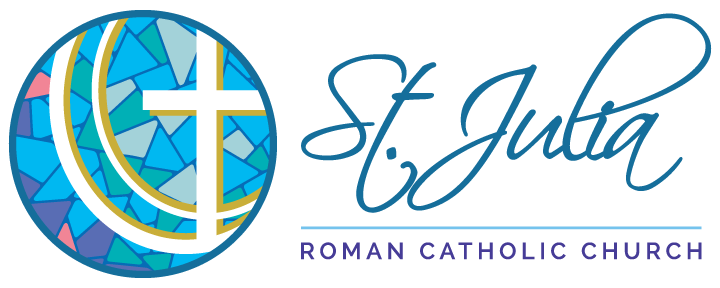|
Dear parish family and friends of St. Julia, This Sunday we celebrate the Ascension of the Lord – the entry of Jesus’ humanity into divine glory in God’s heavenly domain, forty days after his Resurrection. Immediately after Christ’s ascension to heaven, the first church in Jerusalem was under intense pressure. Their first task was to find a replacement for Judas Iscariot. They prayed that God would guide the casting of lots. There were two candidates, and Matthias was chosen, whose Feast Day we celebrated on Friday. Many times, when we are under pressure or facing a difficult time, we can push others away. Such was not the case with the first church and the apostles. Instead, they let the pressure drive them closer together instead of breaking them apart. As we continue to “welcome home” our parish family, may all feel the magnetic pull of Christ drawing us to our spiritual home of St. Julia. As our Easter season quickly comes to a close, we prepare for the celebration of Pentecost, when the Holy Spirit came down upon the apostles. Interesting to note, lots are not mentioned again in the New Testament once the Holy Spirit came as the Church’s guide. Below you will find not one, not two, but three prayers to prepare for Pentecost. May we be reminded of the spiritual gifts that we received at our Confirmation, and may we pray to the Holy Spirit to give us the courage we need to navigate these times together as a community of believers, united in prayer. May God continue to bless and keep safe each of you and those that you love. Fr. Greg Dear parish family and friends of St. Julia,
Calm. Serenity. Peace. No matter what part of the world one comes from or one’s faith background, it is what we all long for. Perhaps it is on a walk or when we find that quiet place, at the celebration of the Mass, or as we pray before turning off the lights at night, for us as believers, it all leads to one source. God. God the Father, God the Son, and God the Holy Spirit. “Peace I leave with you, My peace I give to you.” It is my prayer that each of us be open to the peace that God wants to give and share with us, and that we be instruments of that peace to others. That is how we can transform our homes and families, our community, and our world. May God bless each of you and those that you love with peace of mind, body, and spirit. Fr. Greg Dear parish family and friends of St. Julia,
At the end of a funeral for a priest or deacon the bishop intones the Salve Regina (Hail, Holy Queen). He then turns to a statue of our Blessed Mother, as the other priests and deacons join in singing. Throughout the pandemic, and more recently as we pray for peace in Ukraine, we have turned to our Blessed Mother in prayer seeking her intercession. I have been reading through the notes from our synod listening sessions for my benefit so that I too can listen to the needs of our community and help lead our parish, and one of the questions asked was “why do we turn to porcelain statue when we pray the Hail Mary?” Rather than wait for Pope Francis to answer this question, I thought it would be of great benefit for all. So, why do we turn to a statue of Mary? Why do we fix our eyes upon the crucifix? Why do we have stained glass in our churches? The crucifix is the very sign of our faith. Throughout history, the Church has used stained glass windows, icons, paintings, and statues to teach the early Christians, many who could neither read or write. Today, these forms of art beautify our churches and homes. They inspire us and enrich our sacred spaces. Our statue of the Blessed Mother, for example, is far more than just decorative. It provides us with a focal point during prayer as we seek her intercession. All of these focal points encourage deeper devotion and lift our hearts to heaven. Statues have been a source of argument in the early centuries of the Church. They are not idols for worship. The Church formally confirmed the use of statues and other art as means of veneration at the Second Council of Nicaea in 787 A.D. They clarified, approved, and encouraged the use of statues. The Catechism of the Catholic Church 2132 teaches us: The Christian veneration of images is not contrary to the first commandment which proscribes idols. Indeed, "the honour rendered to an image passes to its prototype," and "whoever venerates an image venerates the person portrayed in it." The honour paid to sacred images is a "respectful veneration," not the adoration due to God alone: Religious worship is not directed to images in themselves, considered as mere things, but under their distinctive aspect as images leading us on to God incarnate. The movement toward the image does not terminate in it as image, but tends toward that whose image it is. Thus, we do not worship the statue, but rather we venerate the person portrayed. As we continue our journey through the month of May, may our eyes be drawn to our Blessed Mother Mary as we seek her intercession for peace in Ukraine and in our hearts. May God bless each of you and those that you love. Fr. Greg “Dear friends, on this day in particular,
but also in the ordinary pastoral life of our communities, I ask the Church to continue to promote vocations. May she touch the hearts of the faithful and enable each of them to discover with gratitude God’s call in their lives, to find courage to say ‘yes’ to God.” Pope Francis My dear friends, This Sunday, May 8, is known as Good Shepherd Sunday. It is also the World Day of Prayer for Vocations. The purpose of World Day of Prayer for Vocations is to publicly fulfill the Lord's instruction to, "Pray the Lord of the harvest to send labourers into His harvest" (Mt 9:38; Lk 10:2). As a climax to a prayer that is continually offered throughout the Church, it affirms the primacy of faith and grace in all that concerns vocations to the priesthood and to the consecrated life. While appreciating all vocations, the Church concentrates its attention this day on vocations to the ordained ministries of priesthood and the diaconate, consecrated life in all its forms, male and female religious life, societies of apostolic life, consecrated virginity, secular institutes in their diversity of services and membership, and to the missionary life. 2022 marks the 59th Anniversary of the World Day of Prayer for Vocations. One may ask, “where are the vocations to the priesthood today?” Well, they are in our classrooms, our places of work, and around our kitchen tables. The challenge is how does one hear this calling when there is so much noise in the world. It is in the quiet and stillness of the heart where the Lord speaks to us. And the opportunity is for us to tap that young man on the shoulder and to plant the seed, saying “I see the qualities of a priest in you,” or “have you ever considered being a priest?” If it were not for Bishop Wingle, I would not be here today. On this Good Shepherd Sunday, let us unite our prayers together with those throughout the world as we pray to our Lord that hearts be open to a vocation, and may those discerning response with a heartfelt and generous yes. May God continue to bless each of you and those that you love. Fr. Greg We flip the calendar this weekend and begin a new month. Our daffodils have been in bloom for some time. Now the buds are emerging on our hydrangeas and our gardens are coming to life. It’s the month of May, and it’s the month of Mary.
The National Catholic Register writes: For centuries, the Catholic Church has set aside the entire month of May to honour Mary, Mother of God. Not just a day in May, mind you, but the entire month. The custom spans both centuries and cultures, with roots going back as far as the Ancient Greeks. In early Greece, May was dedicated to Artemis, the goddess of fecundity. In Ancient Rome, May was dedicated to Flora, the goddess of blooms, or blossoms. They celebrated ludi florals, or floral games, at the end of April and asked the intercession of Flora for all that blooms. In medieval times, similar customs abounded, all centering around the practice of expelling winter, as May 1 was considered the start of new growth. During this period, the tradition of Tricesimum, or “Thirty-Day Devotion to Mary,” came into being. Also called, “Lady Month,” the event was held from August 15 to September 14 and is still observed in some areas. The idea of a month dedicated specifically to Mary can be traced back to baroque times. Although it wasn’t always held during May, Mary Month included thirty daily spiritual exercises honoring Mary. It was in this era that Mary’s Month and May were combined, making May the Month of Mary with special devotions organized on each day throughout the month. This custom became especially widespread during the nineteenth century and remains in practice until today. Here at St. Julia, we will continue to seek the intercession of our Blessed Mother for peace in Ukraine as we turn to her at every Mass in prayer. I also thank our C.W.L. for leading us in the rosary after Monday morning Mass. May our eyes be fixed on Mary, our Blessed Mother, and may God bless each of you and those that you love as we begin this new month together as a parish family here at St. Julia. Mary, pray for us! Fr. Greg |
AuthorFrom Our Pastor Archives
July 2024
|
|
251 Glenridge Ave.
St. Catharines, ON L2T 3Y7 |
©2021 St. Julia Parish
|






